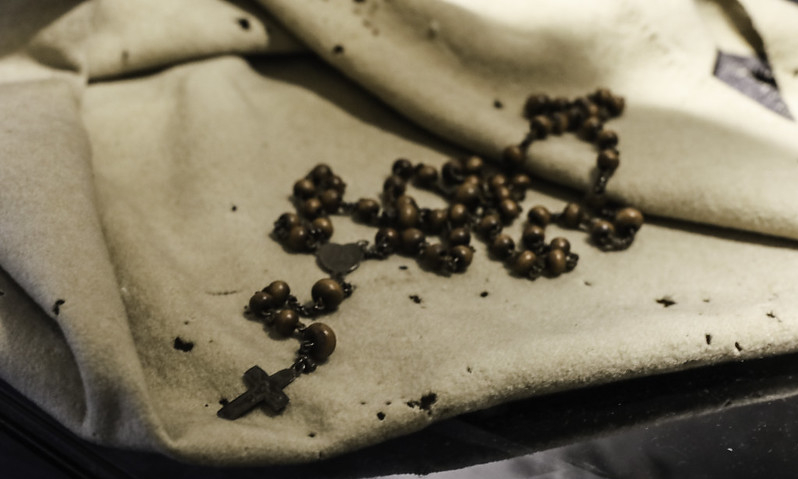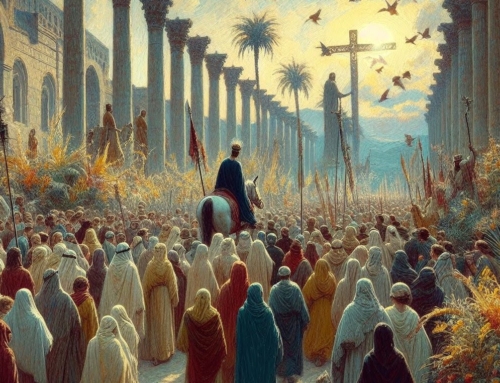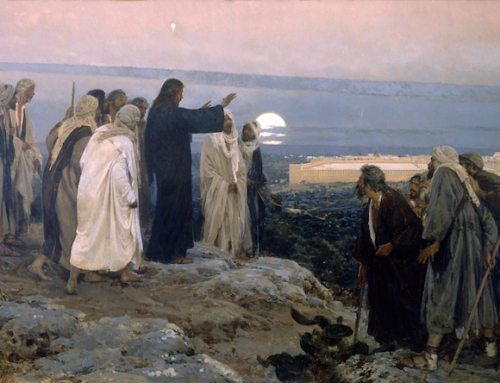2021 Rosary Series: The Glorious Mysteries
To commemorate the 450th anniversary of the Battle of Lepanto, we wish once again to promote this powerful devotion. This month, each Friday post will be dedicated to one of the Rosary’s four sets of mysteries in the hope that they will bear fruit for those who practice this beautiful devotion.
The fact that the Immaculate Conception of the Blessed Virgin Mary is not enshrined within the “canon” of the twenty mysteries of the Marian Psalter has always struck me as a bit odd.
This is not to say that our present series of canonical mysteries is found wanting (as if the “canon” lacked an inner coherence or a certain degree of completeness). But it is to say that the Immaculate Conception is so central to our understanding of Mary that its absence from the Rosary is, in my opinion, noteworthy. For if the Rosary is the principal means by which the cult of the Blessed Virgin Mary is promoted and extended throughout the world, then the mystery of the Immaculate Conception, which discloses the sublime holiness of the Mother of God, should be so included—or, at the very least, duly considered.
But how? How could we so incorporate the mystery of the Immaculate Conception without doing harm to the integrity of the Rosary? Could we amend or alter the canonical order of mysteries, whether by adding a twenty-first mystery, or replacing one mystery for another? Perhaps. If the Rosary is prayed in private (viz., when one is alone), an additional (sixth) decade seems permissible, even beneficial for the soul. But what of public recitation (viz., when one is with others)? How could we incorporate the mystery of the Immaculate Conception into our public recitation of the Rosary?
For a possible solution to this latter query, let us turn to one of the greatest devotees of Our Lady and her Immaculate Conception, St. Maximilian Maria Kolbe (1894-1941). Now Kolbe believed in the doctrine of the Immaculate Conception, which is to say, he believed that Mary was preserved from every stain of original sin (cf., Pius IX, Ineffabilis Deus). But Kolbe did not believe that the Immaculate Conception was reserved to, or coextensive with, the first instance of Mary’s life. Rather, he was wont to employ the Immaculate Conception as if it were Mary’s proper name, a name that was revelatory of her very person (cf., the apparitions of Our Lady at Lourdes). Our Lady, said Kolbe, is the Immaculate Conception!
If this Kolbean insight is correct, then it logically follows that every mystery of the Rosary is but a memory of the Immaculate Conception (cf., John Paul II, Rosarium Virginis Mariae, 11). In other words, if we understand the Immaculate Conception to signify not only an event, but Mary’s very person, then every mystery without exception is but a memory of this woman: the Immaculate Conception. As such, regardless of where (e.g., in private or in public) one prays the Rosary, the Immaculate Conception could be used as an additional lens or a particular subtext for each canonical mystery. Put simply, the mystery of the Immaculate Conception can help us penetrate the depths of each canonical mystery all the more!
Take, for instance, the Glorious Mysteries, which are meant to “lead the faithful to [a] greater hope for the eschatological goal towards which they journey as members of the pilgrim People of God in history” (John Paul II, Rosarium Virginis Mariae, 23). It goes without saying that the Immaculate Conception is herself a sign of this hope. From all eternity, the Immaculate Conception was predestined by God, and this eternal predestination of the Immaculate Conception includes both her preservation from sin and the highest degree of heavenly glory. For those familiar with the Rosary, these prerogatives are definitively realized in the climatic mysteries of her bodily Assumption and Coronation as Queen of Heaven and Earth. But that’s not all. If the Glorious Mysteries are “a true doorway to the depths of the [Risen] Heart of Christ,” then the Immaculate Conception is its threshold (John Paul II, Rosarium Virginis Mariae, 19). After all, the Resurrection and the Ascension of the Lord would not have come to pass without the Immaculate Conception and her fiat. Nor would the Holy Spirit have descended upon the Apostles and the Immaculate Conception at Pentecost had she not been first predestined as his Spouse.
Although the mystery of the Immaculate Conception is not enshrined within the “canon” of the Marian Psalter, it can nonetheless inform our meditation of the joyful, luminous, sorrowful, and glorious mysteries. I warmly commend to you this “Kolbean method” of incorporating the Immaculate Conception in either your private or public recitation of the Rosary. It seems not only fitting, but salutary to do so.
O Mary, conceived without sin, pray for us who have recourse to thee.
✠
Photo of St. Bernadette’s Rosary, by Fr. Lawrence Lew, O.P. (used with permission)







